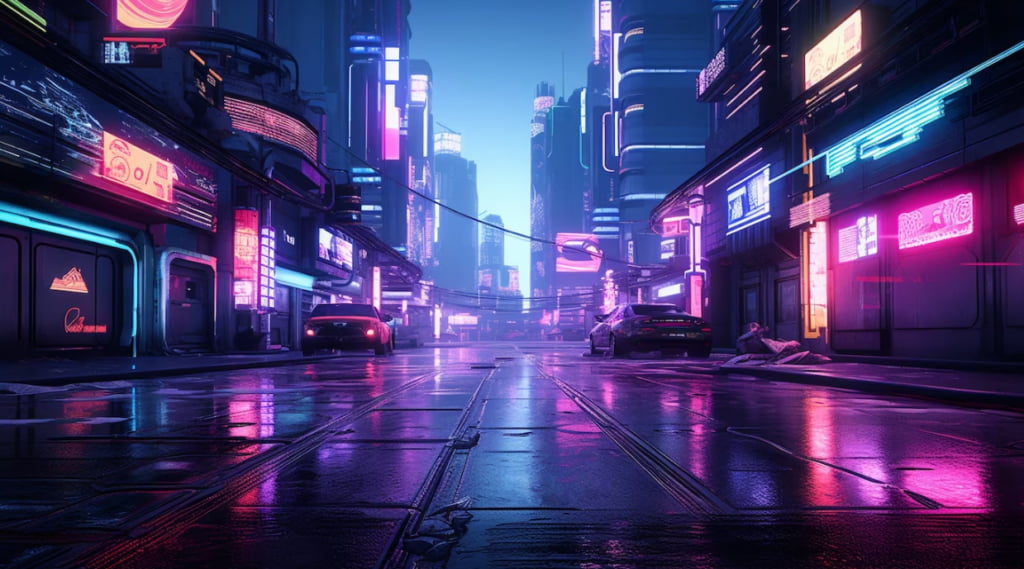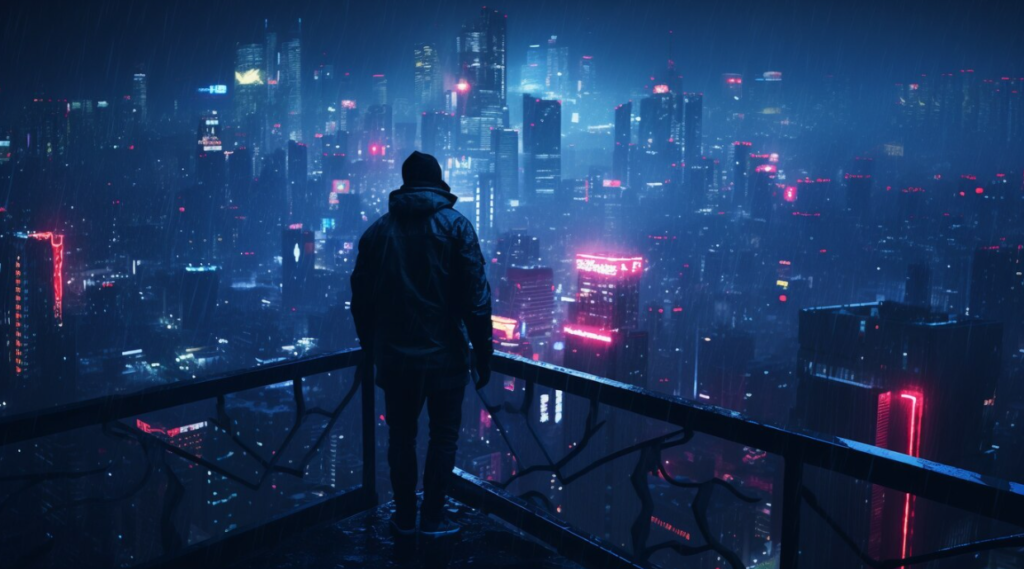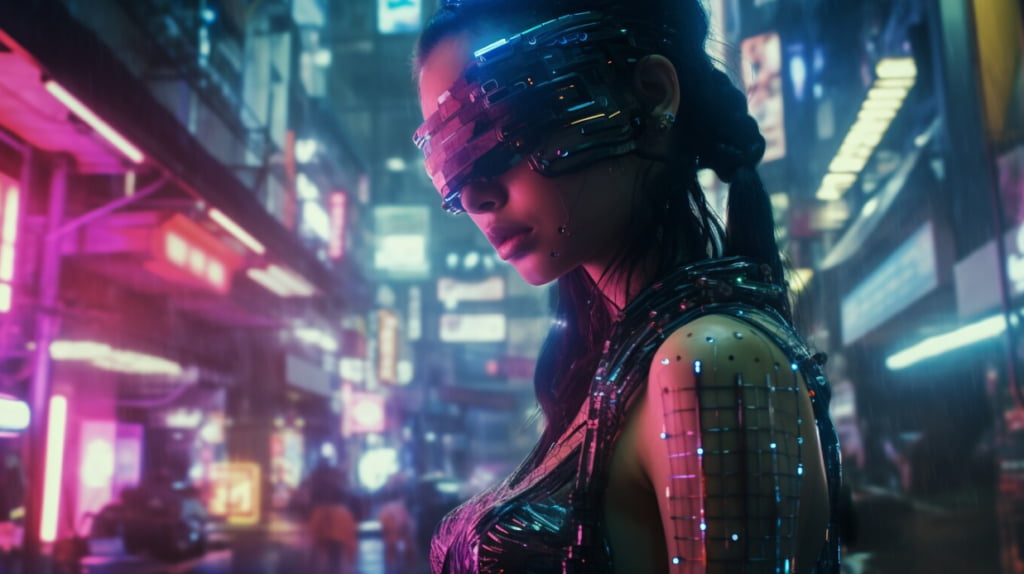Cyberpunk: 15 Best Picks & Genre Exploration
Cyberpunk, as a literary and cinematic genre, has long fascinated and captivated audiences with its dystopian visions of the future, advanced technology, and societal complexities. The genre’s hallmark elements typically include high-tech, low-life settings, cybernetic enhancements, and a focus on the dark side of technological progress. In this article, we delve into 15 of the best cyberpunk books that not only exemplify the genre but also offer diverse perspectives and explorations.
What is Cyberpunk?
Cyberpunk, a prominent sub-genre of science fiction, delves into the complexities of a futuristic dystopian world. Commonly described by the mantra “lowlife and high tech,” it showcases the contrast between cutting-edge technological advancements and the degradation of societal values and structures. As such, many view cyberpunk as a reflection of the post-modern human experience. This encompasses various themes: the reinterpretation and commercialization of history, where the past becomes a style to be marketed and consumed; the blurring lines between highbrow and popular culture; the diminishing importance of individual identity, reducing us to mere statistics in an expansive societal web; and the rise of technologies that prioritize duplication and automation over genuine creation.
The Aesthetics of Cyberpunk
Central to the allure of cyberpunk is its distinct visual style. Envision vibrant neon illuminations piercing through the depths of a technologically advanced urban sprawl. These radiant hues stand in stark contrast to the deep, enigmatic shadows and backstreets, symbolizing the dichotomies previously discussed. This style often draws parallels with the nighttime ambiance of Tokyo. To provide a clearer picture of this signature look and the kind of imagery prevalent in cyberpunk narratives, here are some exemplifying elements of the cyberpunk visual palette:

Tracing the Roots of Cyberpunk
In the contemporary landscape, the term “cyberpunk” immediately evokes visions of Blade Runner, Ready Player One, or The Matrix. While these recent interpretations have breathed new life into the genre, the roots of cyberpunk stretch back far into the annals of speculative fiction. Like many cultural movements, the emergence of cyberpunk can be traced as a response to the dominant genre that came before it, known as New Wave Science Fiction.
Cyberpunk, with its distinctive blend of high-tech futures, dystopian settings, and cybernetic intrigue, stands as a direct reaction to the era of New Wave Science Fiction. This literary precursor, characterized by its experimentation with narrative style, social commentary, and a departure from traditional science fiction norms, set the stage for the cyberpunk revolution.
The story of cyberpunk’s origins is a fascinating journey through the evolution of science fiction, where the torch was passed from one generation of writers to the next. In the pages that follow, we will delve into this narrative, exploring the key elements that shaped cyberpunk and paved the way for its enduring influence on contemporary speculative fiction.
The Evolutionary Timeline of Science Fiction

Science fiction has journeyed through various significant periods. It germinated in the era of pulp literature, flourished during the golden age, and evolved with the emergence of new-wave science fiction. The latter is of particular relevance to cyberpunk, but first, let’s delve briefly into its predecessors:
In its nascent stage, science fiction was enveloped in the pulp literature era, marked by inexpensive and often sensationalized writing. Deriving its name from the low-cost paper it was printed on, pulp literature was rife with competition and gained notoriety for its vivid, sometimes shocking, subject matter.
Responding to the pulp epoch, the golden age of science fiction emerged, setting itself apart with structured narratives centered on heroic figures navigating technological challenges. This period is often associated with “Hard Science Fiction,” emphasizing meticulous scientific accuracy. Works from this era often conveyed an optimism towards technology’s potential to address humanity’s challenges. Classics such as “I, Robot,” “Fahrenheit 451,” and “Man in the High Castle” epitomize this age.
New Wave Science Fiction
New-wave science fiction emerged as a direct counter to the rigidity of the golden age of sci-fi, embracing a more experimental style. Reflecting the countercultural movements of the 60s and 70s, it delved into the interplay between science and humanity, focusing on inner psyches rather than adventures in outer space. This period marked a shift towards exploring societal issues like drug culture, the sexual revolution, and technology’s impact. It was also during this era that more women began to make significant contributions to the genre.
Drawing inspiration from its pulp origins and the lessons of the golden age, new-wave sci-fi introduced a sophisticated literary touch to the genre. The emphasis on scientific detail was reduced, pivoting towards the intricate relationship between human nature and technology. In contrast to its predecessor’s more optimistic outlook, new-wave science fiction often conveyed a gloomier vision of the future. It probed deep, metaphorical questions about humanity’s trajectory and the inner workings of the mind.
Characteristics of Cyberpunk Narratives
While each cyberpunk tale has its unique spin, certain recurring features define the genre:
- Futuristic Dystopia: These narratives typically unfold in the near future, often highlighting a dystopian society influenced by the erosion of historical credibility in the postmodern era;
- Tech-Driven Perspective: The stories frequently incorporate images of cyborgs or use technology as a lens through which the world is perceived;
- Evolving Relationships: Political ties tend to intensify, whereas personal connections diminish in their significance;
- Cultural Convergence: The distinction between high and low culture blurs, with cultural and historical values often marginalized for mass appeal;
- Rebellious Spirit: A hallmark of cyberpunk is its punk ethos – questioning authority and offering a raw, straightforward narrative, distinguishing itself from the more explorative nature of new-wave sci-fi.
“Cyberpunk”: A Brief Origin

The label “cyberpunk” first appeared in literature within Bruce Bethke’s eponymous short story. Aiming for a memorable term that would stick in editors’ minds, Bethke fused “cyber,” denoting technology, with “punk,” suggestive of rebellious youth. While Bethke was instrumental in coining the term, he didn’t create the cyberpunk fiction itself; he merely provided a name for an evolving sci-fi subgenre.
Bruce Bethke explained that he intentionally crafted the term “cyberpunk” when writing his story in the early spring of 1980. From its initial draft, he titled the story “Cyberpunk.” He aimed to formulate a new term that captured the essence of blending punk attitudes with advanced technology.
Essential Early Cyberpunk Reads
It’s important to acknowledge that while the following seminal cyberpunk works have greatly influenced the genre, they might not align with the diverse perspectives promoted by Bookish Brews. Hence, they are listed without extensive descriptions. Interested readers are encouraged to explore these titles independently:
- “Do Androids Dream of Electric Sheep?” by Philip K. Dick (which inspired the film “Blade Runner”);
- “Judge Dredd” by John Wagner;
- “Neuromancer” by William Gibson;
- “Akira” by Katsuhiro Otomo;
- “Cyberpunk” by Bruce Bethke.
The Pitfalls of Cyberpunk
A significant critique of cyberpunk is its pervasive fascination with East Asia, particularly the way it often conflates the genre’s aesthetic with nighttime scenes of Tokyo, but seen through a Western perspective. The U.S.’s relationship with Japan in the 1980s was marked by trade concerns, underscored by latent xenophobia and apprehension about potential Japanese dominance. This sentiment has, unfortunately, lingered in many cyberpunk narratives.
An insightful article by a Singaporean author in Input magazine titled “If cyberpunk is going to survive, it has to drop the racism” sheds light on this issue. It’s essential reading for those invested in the genre’s evolution. Bookish Brews advocates for increased diversity within the genre, aiming to challenge and, eventually, transcend such stereotypes. To that end, here’s a list of cyberpunk works penned by a diverse range of authors for your enjoyment!
Inclusive Picks in the Cyberpunk Genre

And Shall Machines Surrender by Benjanun Sriduangkaew
Reason to Read: Benjanun, a Thai author, excels in science fiction and fantasy. She’s been recognized as a finalist for the John W. Campbell Award for Best New Writer and has been celebrated for her debut novella by the British Science Fiction Association. Readers can also find her short stories in publications like Clarkesworld and Beneath Ceaseless Skies.
Rosewater by Tade Thompson
Reason to Read: Tade Thompson’s “Rosewater” has earned accolades such as the Arthur C. Clarke Award and the Nommo Award. Furthermore, he clinched the Kitschies Golden Tentacle Award and has received nominations for his short stories by the British Science Fiction Association.
Want by Cindy Pon
Reason to Read: Cindy Pon, besides being a prolific writer, is also a talented brush artist. Among her published works is a children’s book that showcases her Chinese brush artistry. Additionally, she has teamed up with Malinda Lo to co-found Diversity in YA and actively contributes to the We Need Diverse Books initiative.
Nexus by Ramez Naam
Reason to Read: Dive into the mind of Ramez Naam, an accomplished American technologist and sci-fi author. Currently serving as co-chair for energy and environment at Singularity University, Naam previously contributed his expertise to Microsoft for over a decade. Not only does he educate at Singularity about energy and innovation, but he’s also shared insights on platforms like MSNBC and BigThink.
Rise of the Red Hand by Olivia Chadha
Reason to Read: Olivia Chadha, with her advanced degrees from Binghampton University and the University of Colorado, Boulder, delves deep into themes like the historic India Partition, global myths, and the delicate human-environment relationship. Her extensive research and academic background enrich her narratives.
Panacea >Build 1.0 by Charli Drever
Reason to Read: Hailing from the UK, Charli Drever masterfully crafts speculative fiction. Beyond being an author, Charli’s diverse skill set includes design and copywriting. Their writings have been consistently captivating, blending satirical elements with bold world-building.
Stormblood by Jeremy Szal
Reason to Read: Jeremy Szal’s literary prowess is evident in both fiction and non-fiction works, featured in esteemed publications like Nature and Tor.com. Readers can also experience his stories in auditory formats and various translations, proving his global appeal.
Conclusion
Cyberpunk, with its distinctive high-tech, low-life world, has a rich and diverse history. Our exploration of its origins, aesthetics, and early influences reveals its enduring impact. While acknowledging its pitfalls, particularly regarding its portrayal of East Asia, diversity and critical examination of the genre’s conventions are crucial. Our list of inclusive cyberpunk picks showcases authors from diverse backgrounds, providing fresh perspectives and pushing the genre’s boundaries. These voices challenge and enrich cyberpunk, reflecting our complex relationship with technology, society, and the human experience. The future of cyberpunk holds promise, as it continues to challenge and inspire with innovation and imaginative exploration. You might be interested in a review of ‘Tokyo Ever After’ by Emiko Jean.
